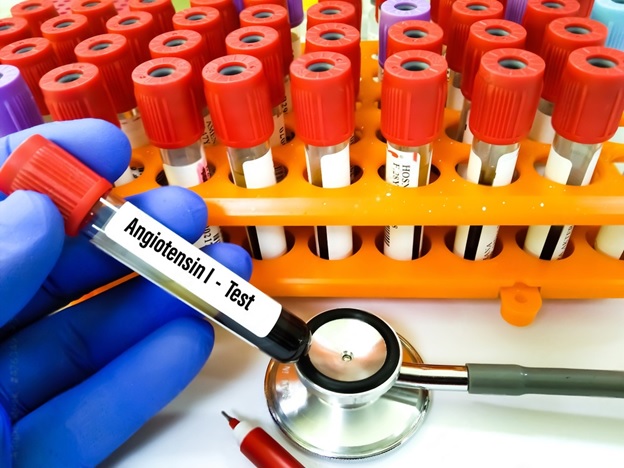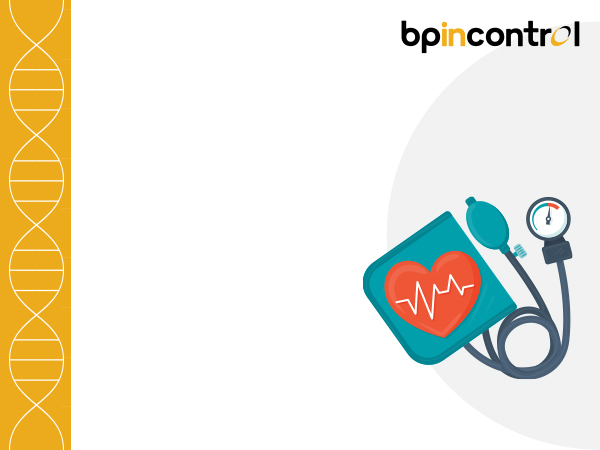Role of Angiotensin in Blood Pressure Regulation

Table of Contents
What is Angiotensin?
Have you ever heard of a hormone called angiotensin? It may not be a household name, but this tiny molecule plays a big role in your body’s health. In fact, angiotensin meaning can be described as a key player in regulating blood pressure and fluid balance, helping to keep your body functioning properly.
The name “angiotensin” comes from the Latin word “angio,” meaning vessel, and “tensin,” meaning tense. This hormone is produced by the liver and then converted into its active form by the kidneys. The primary function of angiotensin is to constrict blood vessels, which helps to increase blood pressure.
Additionally, it stimulates the release of aldosterone, a hormone that regulates sodium and water balance in the body. Understanding the meaning of angiotensin is important in the context of cardiovascular health and disease, as medications that target this hormone are commonly used to treat hypertension and heart failure.
How is angiotensin controlled?
Angiotensin is tightly regulated by a complex feedback system that involves multiple organs and hormones. There are several key steps in the regulation of angiotensin:
- Production of angiotensinogen: The liver produces angiotensinogen, a precursor molecule that circulates in the bloodstream.
- Release of renin: The kidneys sense changes in blood pressure or blood flow and release the enzyme renin into the bloodstream.
- Cleavage of angiotensinogen: Renin breaks down angiotensinogen to form angiotensin I, an inactive peptide.
- Conversion to angiotensin II: Angiotensin I is then converted to its active form, angiotensin II, by the enzyme angiotensin-converting enzyme (ACE). This occurs primarily in the lungs, but other tissues such as the brain, kidneys, and heart can also produce ACE.
- Effects of angiotensin II: Angiotensin II acts on specific receptors in various tissues to cause its effects. It constricts blood vessels, increases blood pressure, and stimulates the release of aldosterone, which promotes sodium and water retention in the kidneys.
The renin-angiotensin-aldosterone system (RAAS) is the primary pathway that controls angiotensin. The RAAS is activated when blood pressure or blood flow to the kidneys decreases, leading to the release of renin. Renin then breaks down angiotensinogen to form angiotensin I, which is then converted to angiotensin II.
Other factors that can influence angiotensin levels and activity include:
- Dietary sodium intake: Salty foods that could put you at risk of hypertension and increase blood pressure and stimulate the RAAS.
- Sympathetic nervous system activity: Activation of the sympathetic nervous system can also stimulate the RAAS and increase angiotensin II levels.
- Medications: Certain drugs can affect the RAAS, such as ACE inhibitors and angiotensin receptor blockers (ARBs), which are commonly used to treat hypertension and heart failure by blocking the actions of angiotensin
What happens when angiotensin levels are low?
When angiotensin levels are low, it typically indicates a state of low blood pressure or low blood volume.This can occur for a variety of reasons, including dehydration, hemorrhage, or certain medications.
Low angiotensin levels can lead to several potential consequences:
- Decreased blood pressure: Angiotensin II is a potent vasoconstrictor, meaning it causes blood vessels to narrow and increases blood pressure. When angiotensin levels are low, this effect is diminished, and blood pressure may decrease leading to hypotension.
- Reduced sodium and water retention: Angiotensin II stimulates the release of aldosterone, a hormone that promotes sodium and water retention in the kidneys. When angiotensin levels are low, aldosterone secretion may be reduced, leading to increased excretion of sodium and water and further contributing to low blood volume and low blood pressure.
- Impaired kidney function: Angiotensin II plays a crucial role in regulating kidney function by promoting the filtration of blood and reabsorption of water and electrolytes. When angiotensin levels are low, kidney function may be impaired, leading to decreased urine output and retention of waste products in the body.
What happens when angiotensin levels are high?
When angiotensin levels are high, it can have several effects on the body. Here are some of the potential consequences:
- Hypertension: High levels of angiotensin can cause blood vessels to constrict, leading to an increase in blood pressure. This can put a strain on the heart and increase the risk of cardiovascular disease.
- Sodium retention: Angiotensin stimulates the release of aldosterone, a hormone that promotes and regulates sodium and water retention in the kidneys. This can lead to an increase in blood volume and further contribute to hypertension.
- Potassium excretion: In addition to promoting sodium retention, aldosterone also stimulates the excretion of potassium in the urine. This can lead to low levels of potassium in the blood, known as hypokalemia.
- Hyponatremia: While angiotensin promotes sodium retention, it can also lead to a decrease in the concentration of sodium in the blood, known as hyponatremia. This is because aldosterone also stimulates the excretion of hydrogen ions, which can lead to an increase in the concentration of bicarbonate ions in the blood. This can cause a shift in fluid balance and lead to hyponatremia.
- Angina: High levels of angiotensin can cause the heart to work harder to pump blood, which can lead to chest pain or discomfort known as angina. This is because the heart muscle may not be getting enough oxygen and nutrients to meet its demands.
FAQs
1. What is the role of angiotensin?
Angiotensin plays a crucial role in regulating blood pressure and fluid balance in the body. It causes blood vessels to constrict, which increases blood pressure, and stimulates the release of aldosterone, a hormone that promotes sodium and water retention in the kidneys.
2. What produces angiotensin?
Angiotensin is produced in the liver as a precursor molecule called angiotensinogen. When the kidneys sense low blood pressure or low blood flow, they release an enzyme called renin, which breaks down angiotensinogen to form angiotensin I.
3. Where is angiotensin found in the body?
Angiotensin is found in various tissues throughout the body, including the lungs, brain, kidneys, and heart. However, its primary site of action is in blood vessels and the kidneys.
4. What does angiotensin do to blood pressure?
Angiotensin is a potent vasoconstrictor, meaning it causes blood vessels to narrow and increases blood pressure. It also stimulates the release of aldosterone, which promotes sodium and water retention in the kidneys, further contributing to an increase in blood pressure. High levels of angiotensin can lead to hypertension, while low levels can cause hypotension.
Disclaimer
The information contained in this article is to educate, spread awareness in relation to hypertension and other diseases to the public at large. The contents of this article are created and developed by BPinControl.in through its authors, which has necessary, authorisations, license, approvals, permits etc to allow usage of this articles on The Website. The views and opinions expressed in this article are views, opinions of the respective authors and are independently endorsed by doctors. Although great care has been taken in compiling and checking the information in this article, The Website shall not be responsible, or in any way liable for any errors, omissions or inaccuracies in this article whether arising from negligence or otherwise, or for any consequences arising therefrom. The content of this article is not a substitute for any medical advice. The Website shall not be held responsible or liable for any consequence arising out of reliance on the information provided in the article.


Comments (0)
No comments found.Add your comment